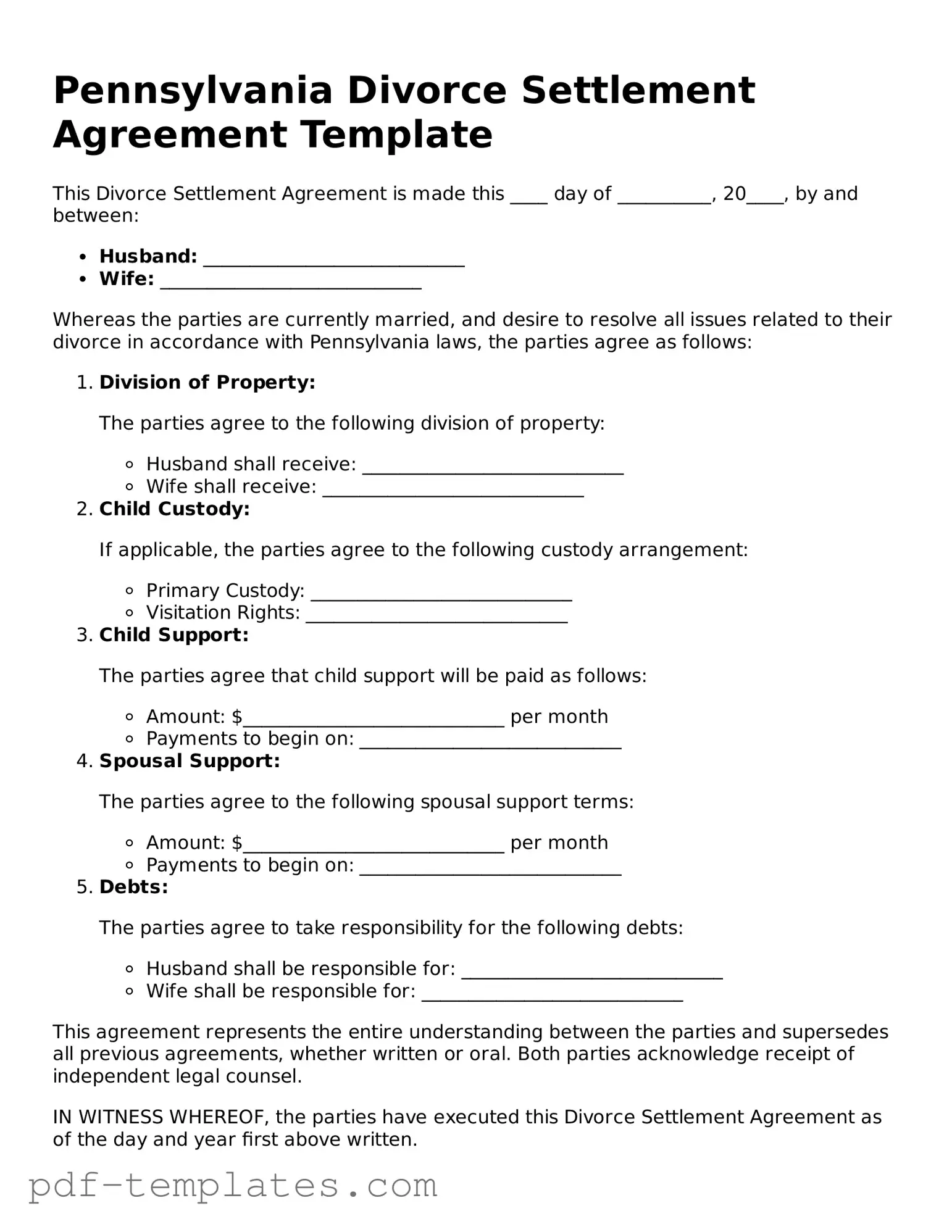The Marital Settlement Agreement is similar to the Pennsylvania Divorce Settlement Agreement as both documents outline the terms of a divorce. They address issues like property division, spousal support, and child custody. The Marital Settlement Agreement serves as a comprehensive document that both parties agree upon, ensuring clarity and reducing the likelihood of future disputes.
The Texas RV Bill of Sale is a legal document that records the transfer of ownership for a recreational vehicle (RV) in Texas. This form serves both the seller and the buyer by providing essential details of the transaction, ensuring a smooth transfer process. Understanding its contents is crucial for anyone involved in buying or selling an RV in the Lone Star State. For those looking for a template, you can visit documentonline.org/blank-texas-rv-bill-of-sale.
The Child Custody Agreement is another document that shares similarities with the Divorce Settlement Agreement. This document specifically focuses on the arrangements for children involved in a divorce. It details custody arrangements, visitation schedules, and decision-making responsibilities, ensuring that the best interests of the children are prioritized and clearly defined.
The Property Settlement Agreement is closely related to the Divorce Settlement Agreement, as it specifically addresses the division of assets and debts. This document lays out how marital property will be divided between the spouses. Like the Divorce Settlement Agreement, it aims to prevent conflicts by clearly stating each party's rights and responsibilities regarding their shared property.
The Spousal Support Agreement is another document that aligns with the Divorce Settlement Agreement. It outlines the financial support one spouse may provide to the other after separation. This agreement specifies the amount, duration, and conditions of support, ensuring both parties understand their financial obligations moving forward.
The Parenting Plan is similar to the Divorce Settlement Agreement in that it focuses on the arrangements for children after a divorce. This document outlines parenting time, decision-making responsibilities, and communication between parents. It aims to create a structured approach to co-parenting, promoting stability for the children involved.
The Separation Agreement is akin to the Divorce Settlement Agreement, as it can serve as a precursor to divorce. This document details how spouses will handle their finances, property, and responsibilities while living apart. It can help clarify expectations and responsibilities before finalizing a divorce, similar to how a Divorce Settlement Agreement does.
The Financial Affidavit is another relevant document. While it may not be a settlement agreement itself, it is often used in conjunction with the Divorce Settlement Agreement. This document requires both parties to disclose their financial situations, including income, expenses, and assets. Transparency in finances is crucial for equitable settlements, making this document essential in the divorce process.
The Child Support Agreement is closely related to the Divorce Settlement Agreement, specifically addressing the financial responsibilities of each parent toward their children. This document outlines how much support will be provided, payment schedules, and any adjustments based on changes in circumstances. Like the Divorce Settlement Agreement, it aims to ensure the children's needs are met post-divorce.
The Alimony Agreement also shares similarities with the Divorce Settlement Agreement. This document specifically addresses the financial support one spouse may provide to the other after separation or divorce. It details the terms, including the amount and duration of payments, ensuring both parties are clear on their financial obligations moving forward.
